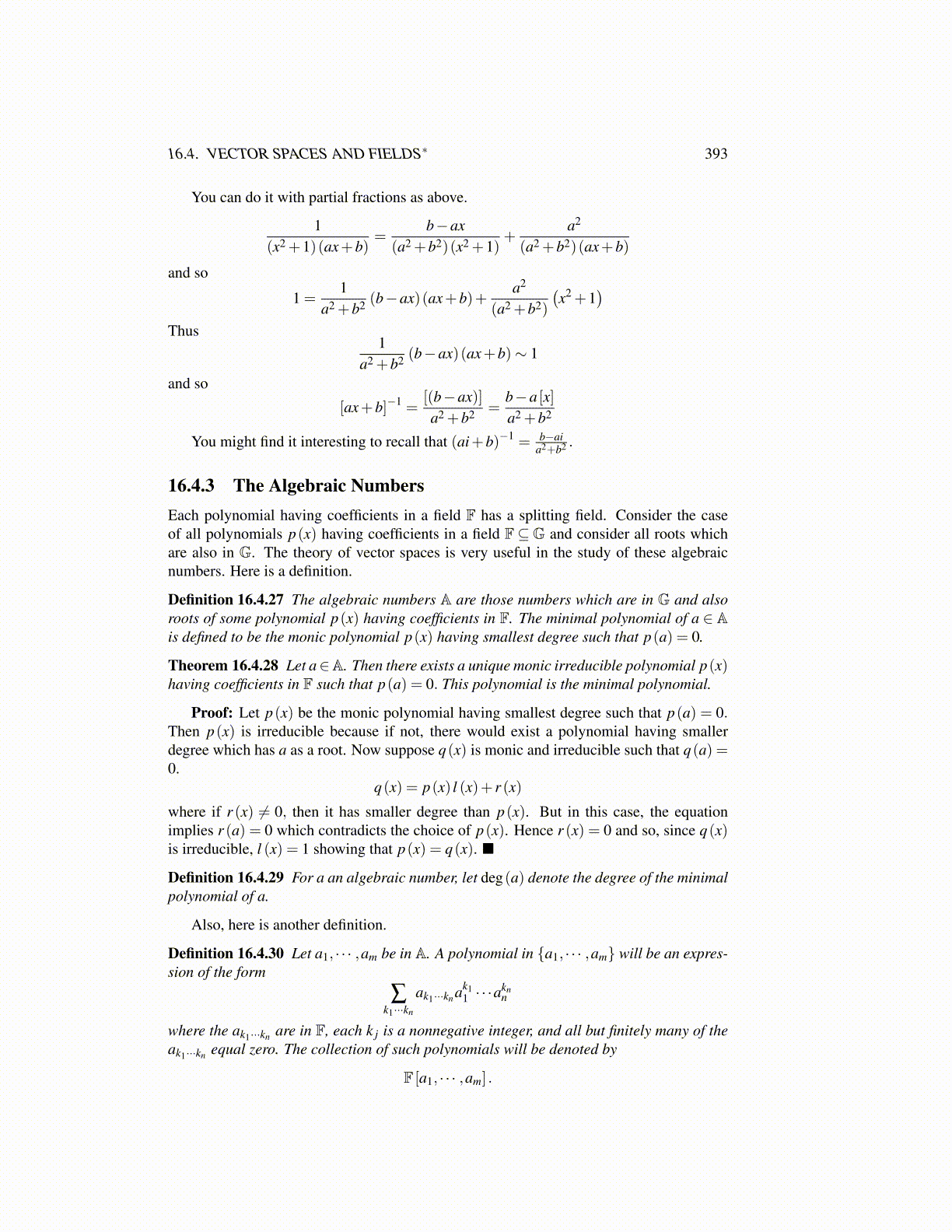
16.4. VECTOR SPACES AND FIELDS∗ 393
You can do it with partial fractions as above.
1(x2 +1)(ax+b)
=b−ax
(a2 +b2)(x2 +1)+
a2
(a2 +b2)(ax+b)
and so
1 =1
a2 +b2 (b−ax)(ax+b)+a2
(a2 +b2)
(x2 +1
)Thus
1a2 +b2 (b−ax)(ax+b)∼ 1
and so
[ax+b]−1 =[(b−ax)]a2 +b2 =
b−a [x]a2 +b2
You might find it interesting to recall that (ai+b)−1 = b−aia2+b2 .
16.4.3 The Algebraic NumbersEach polynomial having coefficients in a field F has a splitting field. Consider the caseof all polynomials p(x) having coefficients in a field F⊆G and consider all roots whichare also in G. The theory of vector spaces is very useful in the study of these algebraicnumbers. Here is a definition.
Definition 16.4.27 The algebraic numbers A are those numbers which are in G and alsoroots of some polynomial p(x) having coefficients in F. The minimal polynomial of a ∈ Ais defined to be the monic polynomial p(x) having smallest degree such that p(a) = 0.
Theorem 16.4.28 Let a∈A. Then there exists a unique monic irreducible polynomial p(x)having coefficients in F such that p(a) = 0. This polynomial is the minimal polynomial.
Proof: Let p(x) be the monic polynomial having smallest degree such that p(a) = 0.Then p(x) is irreducible because if not, there would exist a polynomial having smallerdegree which has a as a root. Now suppose q(x) is monic and irreducible such that q(a) =0.
q(x) = p(x) l (x)+ r (x)
where if r (x) ̸= 0, then it has smaller degree than p(x). But in this case, the equationimplies r (a) = 0 which contradicts the choice of p(x). Hence r (x) = 0 and so, since q(x)is irreducible, l (x) = 1 showing that p(x) = q(x). ■
Definition 16.4.29 For a an algebraic number, let deg(a) denote the degree of the minimalpolynomial of a.
Also, here is another definition.
Definition 16.4.30 Let a1, · · · ,am be in A. A polynomial in {a1, · · · ,am} will be an expres-sion of the form
∑k1···kn
ak1···knak11 · · ·a
knn
where the ak1···kn are in F, each k j is a nonnegative integer, and all but finitely many of theak1···kn equal zero. The collection of such polynomials will be denoted by
F [a1, · · · ,am] .